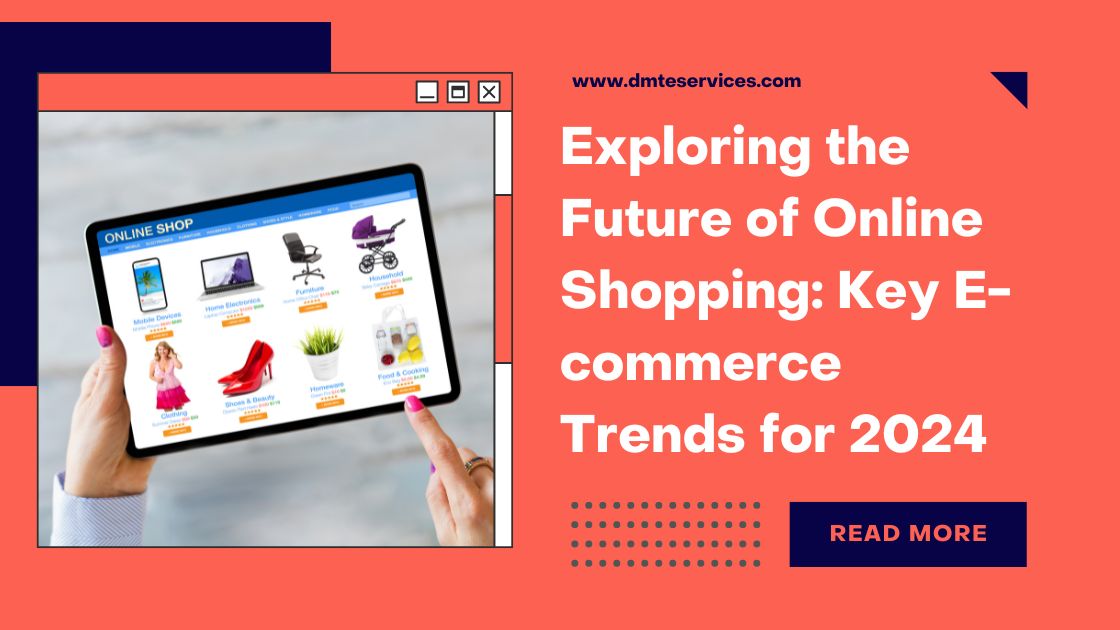Exploring the Future of Online Shopping: Key E-commerce Trends for 2024
In today’s fast-paced digital world, the landscape of online shopping is constantly evolving. To stay ahead in the game, it’s crucial for e-commerce businesses to keep a close eye on emerging trends and adapt accordingly. In this article, we’ll delve into some of the top e-commerce trends poised to shape the industry in 2024.
Personalized Shopping Experience with AI
Artificial Intelligence (AI) is revolutionizing the way we shop online. By leveraging AI and machine learning, e-commerce businesses can tailor the shopping experience to individual preferences. From personalized product recommendations to customized marketing messages, AI is driving higher levels of customer satisfaction and engagement.
The Power of Personalization
AI enables e-commerce platforms to analyze customer data and behavior, allowing for highly targeted and relevant shopping experiences. By understanding each customer’s preferences and past interactions, businesses can offer tailored product suggestions, discounts, and promotions.
Enhanced Customer Engagement
Through AI-powered chatbots and virtual assistants, e-commerce businesses can provide round-the-clock customer support. These intelligent systems can address inquiries, offer product recommendations, and assist with purchases, leading to improved customer satisfaction and retention.
Seamless Omnichannel Integration
In 2024, the lines between online and offline shopping continue to blur as consumers seek seamless experiences across multiple channels. From brick-and-mortar stores to mobile apps and social media platforms, e-commerce businesses must embrace omnichannel integration to meet customer expectations.
Bridging the Gap Between Online and Offline
Omnichannel strategies, such as click-and-collect and in-store pickup options, bridge the gap between digital and physical shopping experiences. By offering customers the flexibility to shop how and where they prefer, businesses can enhance convenience and drive sales.
The Rise of Progressive Web Apps (PWAs)
Progressive Web Apps (PWAs) offer a mobile-friendly and responsive shopping experience without the need for a native app. By leveraging PWAs, e-commerce businesses can reach a broader audience across various devices while delivering fast and engaging user experiences.
Immersive Shopping with AR and VR
Augmented Reality (AR) and Virtual Reality (VR) technologies are transforming the way consumers interact with products online. By providing immersive and interactive experiences, e-commerce businesses can boost customer confidence and drive conversions.
Bringing Products to Life
AR allows shoppers to visualize products in real-world settings before making a purchase. From trying on virtual clothing to previewing furniture in their homes, AR enhances the online shopping experience by offering a glimpse of how products will look and feel in reality.
Virtual Showrooms and Experiences
VR enables e-commerce businesses to create virtual showrooms and experiences where customers can explore products in a simulated environment. Whether touring a virtual store or attending a virtual event, VR immerses shoppers in engaging and memorable shopping experiences.
Sustainability and Ethical Shopping
In 2024, consumers are increasingly prioritizing sustainability and ethical practices when making purchasing decisions. E-commerce businesses that embrace sustainability initiatives and transparent supply chains can gain a competitive edge and build trust with environmentally-conscious customers.
Eco-Friendly Packaging and Practices
From biodegradable packaging materials to carbon-neutral shipping options, e-commerce businesses are implementing sustainable practices throughout the supply chain. By reducing environmental impact and promoting eco-friendly alternatives, businesses can appeal to environmentally-conscious consumers.
Ethical Sourcing and Fair Trade
Consumers are becoming more aware of ethical sourcing practices and fair labor standards. E-commerce businesses that prioritize ethically-sourced products and support fair trade initiatives can attract socially-conscious customers and foster trust and loyalty.
Conclusion
In conclusion, the e-commerce landscape in 2024 is shaped by technological advancements, shifting consumer preferences, and a growing emphasis on sustainability and ethical shopping practices. By staying abreast of these trends and adapting their strategies accordingly, e-commerce businesses can thrive in an ever-evolving market.


